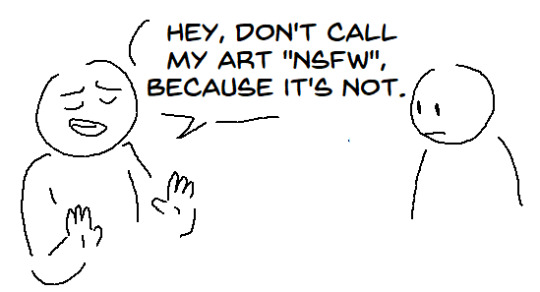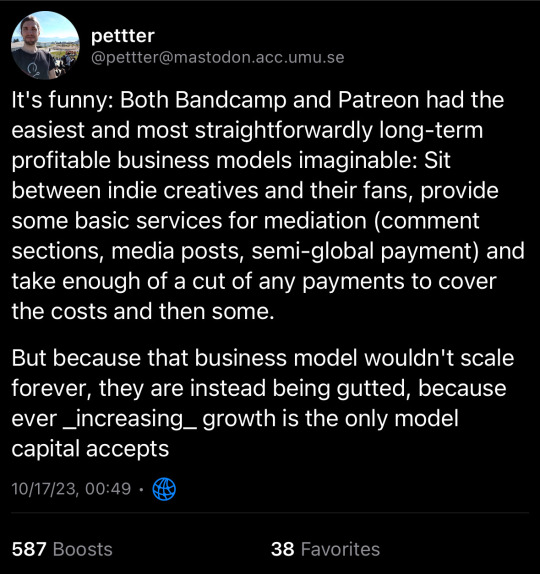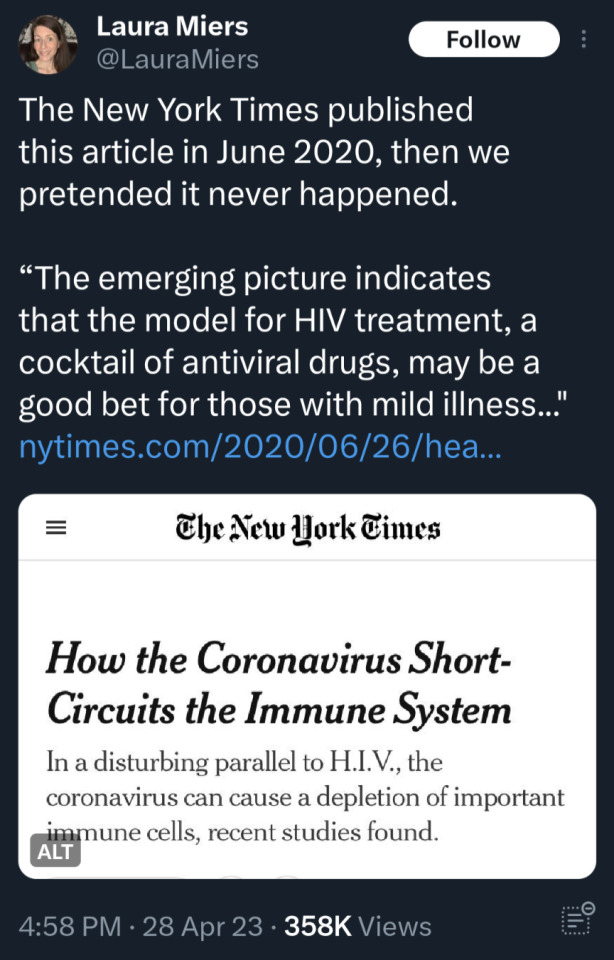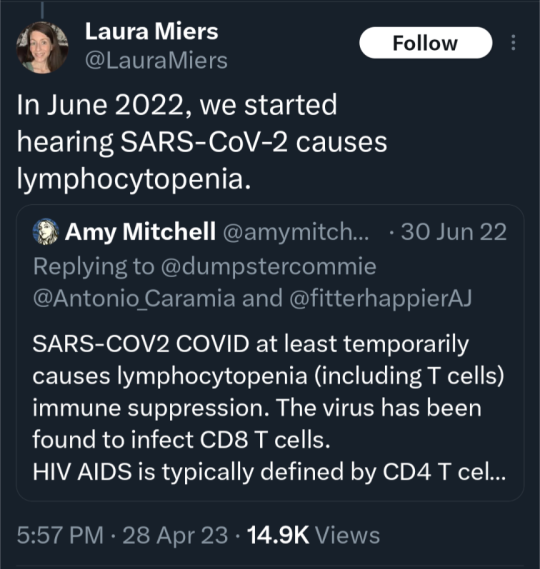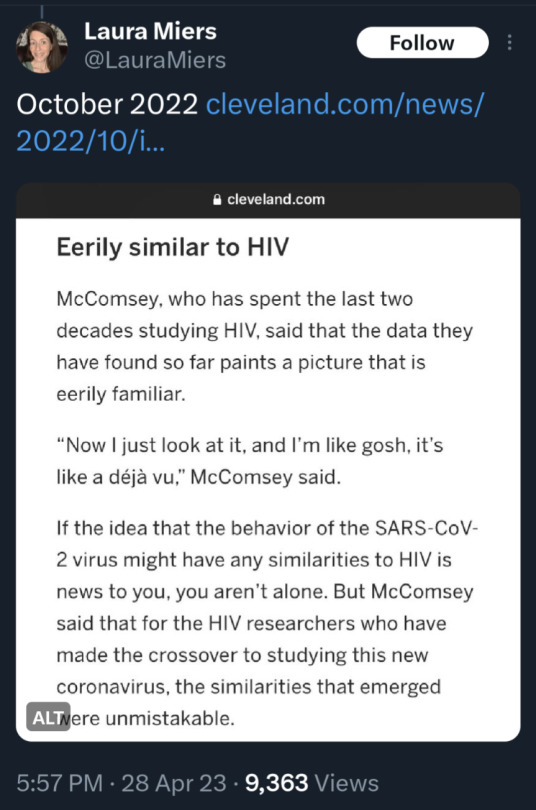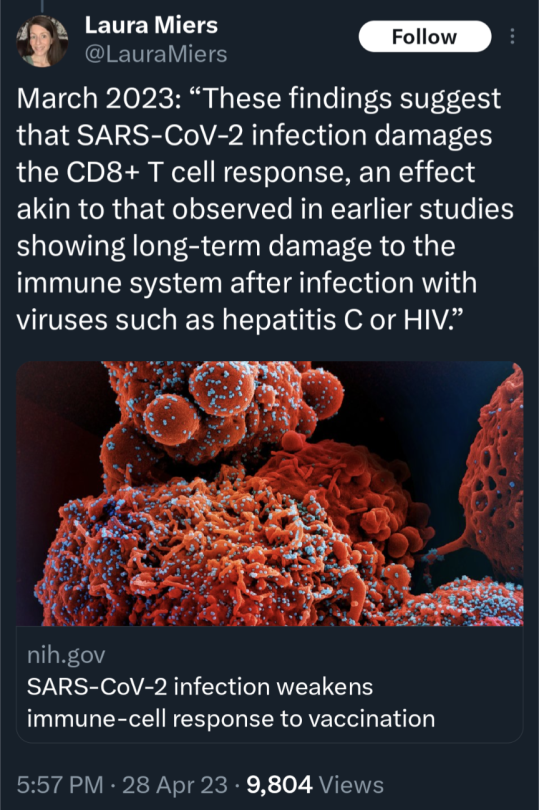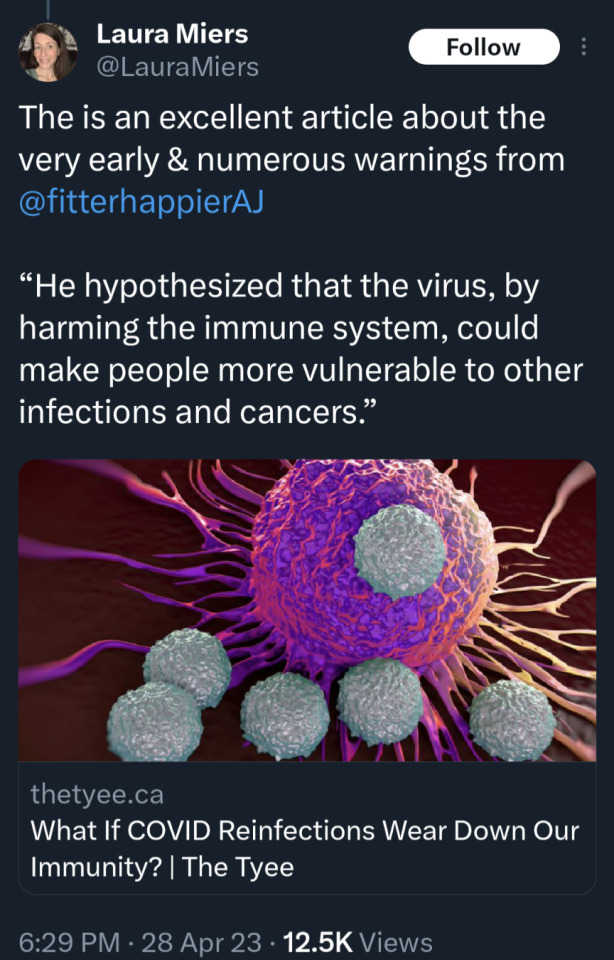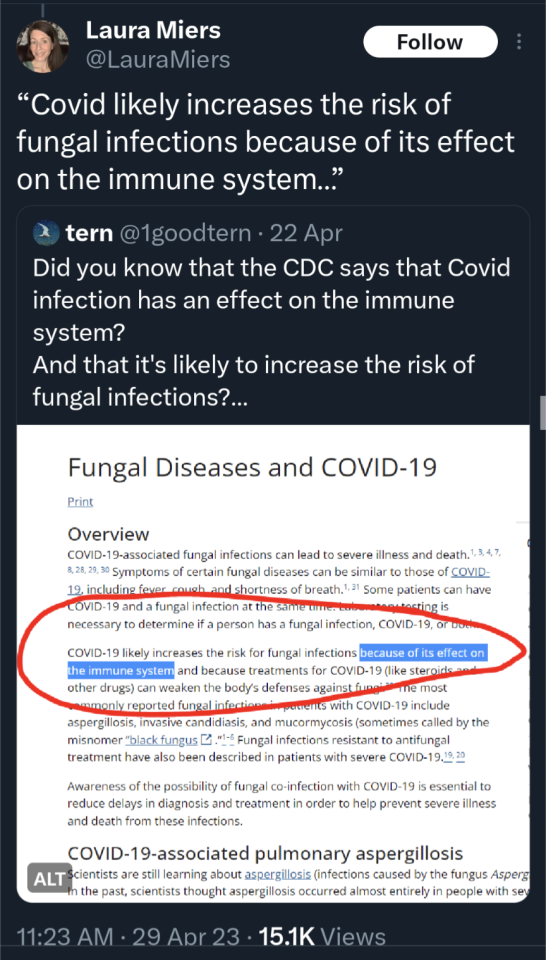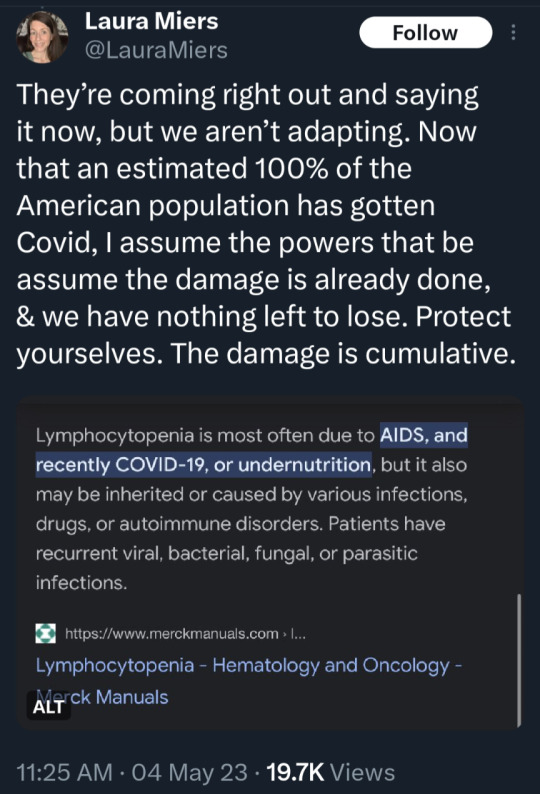Photo
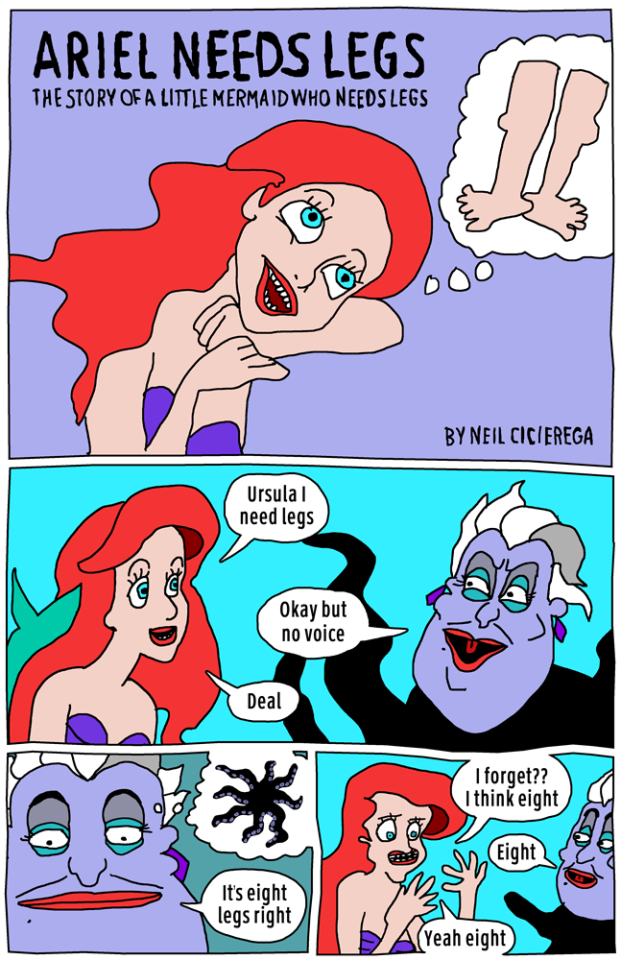
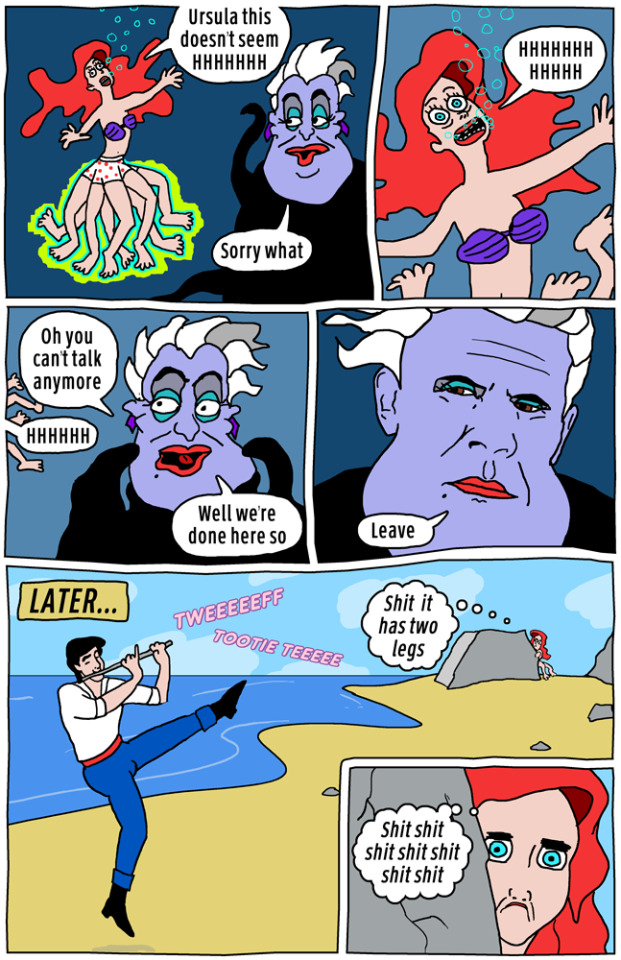


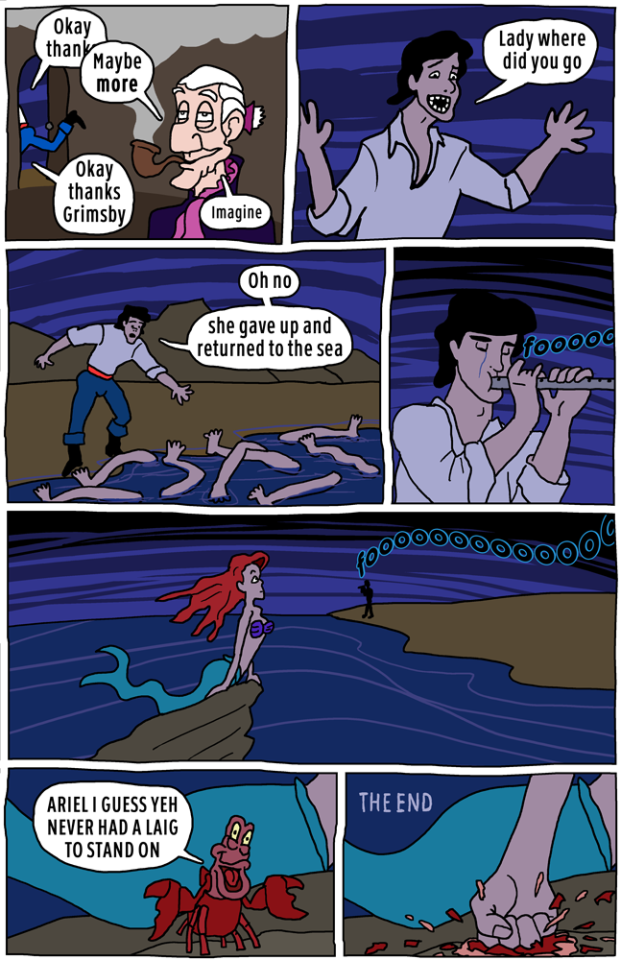
ARIEL NEEDS LEGS
I was gonna make Emmy draw this but she said no so I drew it myself.
I’ve never drawn a comic before!
edit: WATCH IN MOTION COMIC FORM
625K notes
·
View notes
Text
How I got scammed
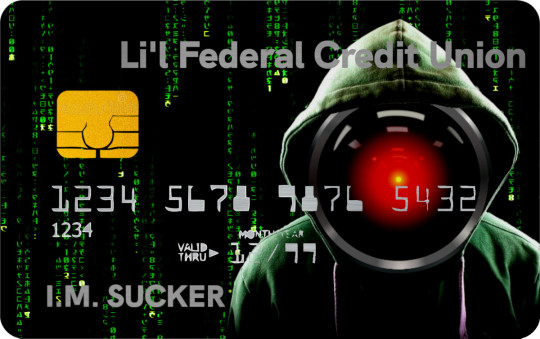
If you'd like an essay-formatted version of this post to read or share, here's a link to it on pluralistic.net, my surveillance-free, ad-free, tracker-free blog:
https://pluralistic.net/2024/02/05/cyber-dunning-kruger/#swiss-cheese-security

I wuz robbed.
More specifically, I was tricked by a phone-phisher pretending to be from my bank, and he convinced me to hand over my credit-card number, then did $8,000+ worth of fraud with it before I figured out what happened. And then he tried to do it again, a week later!
Here's what happened. Over the Christmas holiday, I traveled to New Orleans. The day we landed, I hit a Chase ATM in the French Quarter for some cash, but the machine declined the transaction. Later in the day, we passed a little credit-union's ATM and I used that one instead (I bank with a one-branch credit union and generally there's no fee to use another CU's ATM).
A couple days later, I got a call from my credit union. It was a weekend, during the holiday, and the guy who called was obviously working for my little CU's after-hours fraud contractor. I'd dealt with these folks before – they service a ton of little credit unions, and generally the call quality isn't great and the staff will often make mistakes like mispronouncing my credit union's name.
That's what happened here – the guy was on a terrible VOIP line and I had to ask him to readjust his mic before I could even understand him. He mispronounced my bank's name and then asked if I'd attempted to spend $1,000 at an Apple Store in NYC that day. No, I said, and groaned inwardly. What a pain in the ass. Obviously, I'd had my ATM card skimmed – either at the Chase ATM (maybe that was why the transaction failed), or at the other credit union's ATM (it had been a very cheap looking system).
I told the guy to block my card and we started going through the tedious business of running through recent transactions, verifying my identity, and so on. It dragged on and on. These were my last hours in New Orleans, and I'd left my family at home and gone out to see some of the pre-Mardi Gras krewe celebrations and get a muffalata, and I could tell that I was going to run out of time before I finished talking to this guy.
"Look," I said, "you've got all my details, you've frozen the card. I gotta go home and meet my family and head to the airport. I'll call you back on the after-hours number once I'm through security, all right?"
He was frustrated, but that was his problem. I hung up, got my sandwich, went to the airport, and we checked in. It was total chaos: an Alaska Air 737 Max had just lost its door-plug in mid-air and every Max in every airline's fleet had been grounded, so the check in was crammed with people trying to rebook. We got through to the gate and I sat down to call the CU's after-hours line. The person on the other end told me that she could only handle lost and stolen cards, not fraud, and given that I'd already frozen the card, I should just drop by the branch on Monday to get a new card.
We flew home, and later the next day, I logged into my account and made a list of all the fraudulent transactions and printed them out, and on Monday morning, I drove to the bank to deal with all the paperwork. The folks at the CU were even more pissed than I was. The fraud that run up to more than $8,000, and if Visa refused to take it out of the merchants where the card had been used, my little credit union would have to eat the loss.
I agreed and commiserated. I also pointed out that their outsource, after-hours fraud center bore some blame here: I'd canceled the card on Saturday but most of the fraud had taken place on Sunday. Something had gone wrong.
One cool thing about banking at a tiny credit-union is that you end up talking to people who have actual authority, responsibility and agency. It turned out the the woman who was processing my fraud paperwork was a VP, and she decided to look into it. A few minutes later she came back and told me that the fraud center had no record of having called me on Saturday.
"That was the fraudster," she said.
Oh, shit. I frantically rewound my conversation, trying to figure out if this could possibly be true. I hadn't given him anything apart from some very anodyne info, like what city I live in (which is in my Wikipedia entry), my date of birth (ditto), and the last four digits of my card.
Wait a sec.
He hadn't asked for the last four digits. He'd asked for the last seven digits. At the time, I'd found that very frustrating, but now – "The first nine digits are the same for every card you issue, right?" I asked the VP.
I'd given him my entire card number.
Goddammit.
The thing is, I know a lot about fraud. I'm writing an entire series of novels about this kind of scam:
https://us.macmillan.com/books/9781250865878/thebezzle
And most summers, I go to Defcon, and I always go to the "social engineering" competitions where an audience listens as a hacker in a soundproof booth cold-calls merchants (with the owner's permission) and tries to con whoever answers the phone into giving up important information.
But I'd been conned.
Now look, I knew I could be conned. I'd been conned before, 13 years ago, by a Twitter worm that successfully phished out of my password via DM:
https://locusmag.com/2010/05/cory-doctorow-persistence-pays-parasites/
That scam had required a miracle of timing. It started the day before, when I'd reset my phone to factory defaults and reinstalled all my apps. That same day, I'd published two big online features that a lot of people were talking about. The next morning, we were late getting out of the house, so by the time my wife and I dropped the kid at daycare and went to the coffee shop, it had a long line. Rather than wait in line with me, my wife sat down to read a newspaper, and so I pulled out my phone and found a Twitter DM from a friend asking "is this you?" with a URL.
Assuming this was something to do with those articles I'd published the day before, I clicked the link and got prompted for my Twitter login again. This had been happening all day because I'd done that mobile reinstall the day before and all my stored passwords had been wiped. I entered it but the page timed out. By that time, the coffees were ready. We sat and chatted for a bit, then went our own ways.
I was on my way to the office when I checked my phone again. I had a whole string of DMs from other friends. Each one read "is this you?" and had a URL.
Oh, shit, I'd been phished.
If I hadn't reinstalled my mobile OS the day before. If I hadn't published a pair of big articles the day before. If we hadn't been late getting out the door. If we had been a little more late getting out the door (so that I'd have seen the multiple DMs, which would have tipped me off).
There's a name for this in security circles: "Swiss-cheese security." Imagine multiple slices of Swiss cheese all stacked up, the holes in one slice blocked by the slice below it. All the slices move around and every now and again, a hole opens up that goes all the way through the stack. Zap!
The fraudster who tricked me out of my credit card number had Swiss cheese security on his side. Yes, he spoofed my bank's caller ID, but that wouldn't have been enough to fool me if I hadn't been on vacation, having just used a pair of dodgy ATMs, in a hurry and distracted. If the 737 Max disaster hadn't happened that day and I'd had more time at the gate, I'd have called my bank back. If my bank didn't use a slightly crappy outsource/out-of-hours fraud center that I'd already had sub-par experiences with. If, if, if.
The next Friday night, at 5:30PM, the fraudster called me back, pretending to be the bank's after-hours center. He told me my card had been compromised again. But: I hadn't removed my card from my wallet since I'd had it replaced. Also, it was half an hour after the bank closed for the long weekend, a very fraud-friendly time. And when I told him I'd call him back and asked for the after-hours fraud number, he got very threatening and warned me that because I'd now been notified about the fraud that any losses the bank suffered after I hung up the phone without completing the fraud protocol would be billed to me. I hung up on him. He called me back immediately. I hung up on him again and put my phone into do-not-disturb.
The following Tuesday, I called my bank and spoke to their head of risk-management. I went through everything I'd figured out about the fraudsters, and she told me that credit unions across America were being hit by this scam, by fraudsters who somehow knew CU customers' phone numbers and names, and which CU they banked at. This was key: my phone number is a reasonably well-kept secret. You can get it by spending money with Equifax or another nonconsensual doxing giant, but you can't just google it or get it at any of the free services. The fact that the fraudsters knew where I banked, knew my name, and had my phone number had really caused me to let down my guard.
The risk management person and I talked about how the credit union could mitigate this attack: for example, by better-training the after-hours card-loss staff to be on the alert for calls from people who had been contacted about supposed card fraud. We also went through the confusing phone-menu that had funneled me to the wrong department when I called in, and worked through alternate wording for the menu system that would be clearer (this is the best part about banking with a small CU – you can talk directly to the responsible person and have a productive discussion!). I even convinced her to buy a ticket to next summer's Defcon to attend the social engineering competitions.
There's a leak somewhere in the CU systems' supply chain. Maybe it's Zelle, or the small number of corresponding banks that CUs rely on for SWIFT transaction forwarding. Maybe it's even those after-hours fraud/card-loss centers. But all across the USA, CU customers are getting calls with spoofed caller IDs from fraudsters who know their registered phone numbers and where they bank.
I've been mulling this over for most of a month now, and one thing has really been eating at me: the way that AI is going to make this kind of problem much worse.
Not because AI is going to commit fraud, though.
One of the truest things I know about AI is: "we're nowhere near a place where bots can steal your job, we're certainly at the point where your boss can be suckered into firing you and replacing you with a bot that fails at doing your job":
https://pluralistic.net/2024/01/15/passive-income-brainworms/#four-hour-work-week
I trusted this fraudster specifically because I knew that the outsource, out-of-hours contractors my bank uses have crummy headsets, don't know how to pronounce my bank's name, and have long-ass, tedious, and pointless standardized questionnaires they run through when taking fraud reports. All of this created cover for the fraudster, whose plausibility was enhanced by the rough edges in his pitch - they didn't raise red flags.
As this kind of fraud reporting and fraud contacting is increasingly outsourced to AI, bank customers will be conditioned to dealing with semi-automated systems that make stupid mistakes, force you to repeat yourself, ask you questions they should already know the answers to, and so on. In other words, AI will groom bank customers to be phishing victims.
This is a mistake the finance sector keeps making. 15 years ago, Ben Laurie excoriated the UK banks for their "Verified By Visa" system, which validated credit card transactions by taking users to a third party site and requiring them to re-enter parts of their password there:
https://web.archive.org/web/20090331094020/http://www.links.org/?p=591
This is exactly how a phishing attack works. As Laurie pointed out, this was the banks training their customers to be phished.
I came close to getting phished again today, as it happens. I got back from Berlin on Friday and my suitcase was damaged in transit. I've been dealing with the airline, which means I've really been dealing with their third-party, outsource luggage-damage service. They have a terrible website, their emails are incoherent, and they officiously demand the same information over and over again.
This morning, I got a scam email asking me for more information to complete my damaged luggage claim. It was a terrible email, from a noreply@ email address, and it was vague, officious, and dishearteningly bureaucratic. For just a moment, my finger hovered over the phishing link, and then I looked a little closer.
On any other day, it wouldn't have had a chance. Today – right after I had my luggage wrecked, while I'm still jetlagged, and after days of dealing with my airline's terrible outsource partner – it almost worked.
So much fraud is a Swiss-cheese attack, and while companies can't close all the holes, they can stop creating new ones.
Meanwhile, I'll continue to post about it whenever I get scammed. I find the inner workings of scams to be fascinating, and it's also important to remind people that everyone is vulnerable sometimes, and scammers are willing to try endless variations until an attack lands at just the right place, at just the right time, in just the right way. If you think you can't get scammed, that makes you especially vulnerable:
https://pluralistic.net/2023/02/24/passive-income/#swiss-cheese-security

Image: Cryteria (modified) https://commons.wikimedia.org/wiki/File:HAL9000.svg
CC BY 3.0 https://creativecommons.org/licenses/by/3.0/deed.en
10K notes
·
View notes
Text
This post is a great and frustrating example of just how difficult it is to find any kind of reliable consumer safety information on the Internet right now.
Lead is dangerous. We've known that lead exposure is dangerous for a very, very long time, and it didn't stop corporations from using lead in everything from paint to gasoline and spreading misinformation and disinformation to suppress safety concerns so that corporations could continue making money even if it meant widespread health problems and brain damage to entire generations. This is just plain, historical fact.
So the claim that popular plates from the 1970s-80s might have unsafe levels of lead—even if standards at the time suggested they may be safe, even if the company now is saying they're safe to eat off of—is entirely plausible. Even finding lead in more recently-produced plates would not be impossible, as companies have outsourced production to overseas contractors in an effort to reduce costs and increase profit margins (and to insulate themselves from the inevitable scandals). This has happened with children's toys multiple times in my memory (see: 1, 2, 3).
But it's also true that fearmongering is easy on the Internet, and there are a lot of people, particularly people with a vested interest in selling some kind of alternative, who will stoke reasonable fears of dangerous substances like lead by playing on the general public's ignorance about how things like chemistry and biology actually work (or, more charitably, people who do not understand chemistry or biology as well as they think they do, and end up spreading misinformation as a result). As someone who's been involved in science and skepticism on the Internet for the better part of 20 years at this point, I have to say that Lead Safe Mama, aka Tamara Rubin (the source of the original infographic) throws up a lot of red flags, and her page feels like it has more in common with pseudoscientists like Food Babe or Dr. Mercola than reputable science pages. But that alone doesn't mean she's unreliable, it's more a vibe than anything else. That said, she does not appear to have any scientific education or background. Her credentials to speak on the issue are (as far as I can tell from some brief research) having children who experienced lead poisoning, serving in leadership positions on two lead safety advocacy nonprofits, and taking a one-day certification course in the use of the x-ray fluorescence device she uses to do much of her lead testing in 2009, along with years of being an activist on this issue.
There's also a lot of people online with a vested interest in dismissing the claims of skeptics and people raising reasonable concerns about dangerous products, whether it's the Reddit threads full of people saying "well it hasn't killed me yet, so it must be fine" or the people grasping for any excuse to justify their antique collections or their fandom for a particular product. Corelle (and similar brands affected by claims like those made by Lead Safe Mama) have a vested interest in arguing that their old products are safe, whether or not that's actually the case, because there's no incentive to do a recall or pull items off the shelves when they're complying with current standards, and admitting any kind of danger would potentially open them up to liability and lawsuits.
All those conflicting interests make it difficult to find reliable information, particularly when it doesn't seem like any independent labs or agencies have conducted studies of the relevant dishes. So what do we know?
The original claim is based on testing done by Tamara Rubin for her Lead Safe Mama blog. If we take her at her word and ignore my misgivings about her and her site, then she arrived at her conclusions by using X-Ray Fluorescence (XRF), a technique that effectively uses light to determine what elements are present in a sample. It's a method recognized and used by organizations like the U.S. Consumer Product Safety Commission to test for lead and other chemicals in items, particularly those used by children (see: 1, 2, 3). It also has limitations, particularly when used on thin films such as paints (see: 1, 2).
The Snopes article (written by Alex Kasprak) that covers the broad "will the lead in this product poison me" claims stemming from Rubin and other sources cites pharmacology professor (and former colleague of Rubin's) Howard Mielke, who calls XRF a "first step" in determining whether something has unsafe levels of lead in it, which is consistent with the CPSC's description of XRF's limitations and use as a "screening" tool. The Snopes article goes on to make the point that in order to determine safety, you have to determine how much of the lead is likely to actually be ingested, which XRF can't establish.
Which brings us to the more inflammatory, definitive claim, that "Corelle said any dish made before 2005 should be decorative." I've seen notes on this post saying that Milksolid, who posted the infographic, later said that was a hoax. I've seen notes saying that Snopes debunked this claim. I haven't dug into Milksolid's posting history to see whether that's true or not, but the basic claim comes from the same post of Rubin's as the infographic. She shares an e-mail that was shared to her from a reader named Jessica, coming from Corelle. The text of the e-mail reads (emphasis added):
From: Monica “Thank you for contacting contacting Corelle Brands. Prior to the 1990s, virtually all glass and ceramic ware made anywhere in the world contained Lead as a primary ingredient in the decorating fluxes and glazes. All our products have been Lead free since the mid-2000’s. Lead content has never been regulated until recently. We recommend using the items you have as decorative pieces. We hope this information is helpful. Sincerely, Monica Corelle Brands”
Now, there's a lot we have to kind of accept on faith here, that a journalist or investigator would really be interested in following up on: that Jessica is a legitimate source and is not trolling Rubin (or a fabrication), that this e-mail is genuine, that Monica is a legitimate employee of Corelle and is authorized to speak on behalf of the company on this matter, and so forth. So, not surprisingly, it seems a writer from Snopes (Dan MacGuill) reached out to Rubin to receive further clarification on these sources.
Rubin's response was to write four posts in the same day (1, 2, 3, 4) about her history with Snopes, which read a whole lot like axe-grinding. At the time, as she cites, Snopes had written four articles that mention her or her work (1, 2, 3, 4):
"Vintage Pyrex Contains Unsafe Levels of Lead?" by Kim LaCapria, Dec. 1 2016, rated "Unproven," stresses that Rubin's posts making the claim did not include a testing methodology, that other people conducting tests found conflicting results, and that the thorough documentation of Pyrex's recipe does not indicate any presence of lead at any point or any changes in response to the FDA's changing regulatory standards regarding lead.
"Do 'Fidget Spinners' Contain Deadly Amounts of Lead?" by Dan Evon, Jun. 3 2017, rated "Mixture," cites Rubin's own posts & incredulity about how her tests (which showed a minority of tested fidget spinners had positive lead results) were being spun into fearmongering headlines and rumors. Also mentions that her tests have not been replicated or peer reviewed.
"Do Walmart Jelly Sandals Contain Lead?" by Dan Evon, Jun. 10 2017, rated "Unproven," cites Rubin's negative lead tests in opposition to a post about a positive result from a home lead test kit. Stresses that users differed on the results from these home test kits; note that this is the same result given in the Pyrex article where inconsistent results were also found.
"Does This Cookware or Children’s Toy Contain Dangerous Levels of Lead?" by Alex Kasprak, Mar. 19 2019, gives overall background on Rubin, her methods, and what additional information needs to be known before determining the risk level of coming into contact with or consuming the lead even when it's present. Ends with the overall point that Rubin's methods are generally sound and identify products that have a higher risk of lead contamination.
Rubin's posts detail her encounter with Snopes co-founder David Mikkelson (1, 2), where she confronted him about how Snopes has sometimes cited her as an expert and sometimes has tried to discredit her. You can read the transcript of her discussion with Mikkelson at the link; in my opinion, she seriously misrepresents how she was cited by those articles, and their conclusions (for example, she says she was cited as an expert in the "Walmart jellies" article and that she had "disproven that myth," when Snopes rated that as unproven and cited her as one of several examples of inconsistent testing results. By contrast, she says that Snopes concluded that "there isn’t an unsafe level of Lead in vintage Pyrex," which the article does not say, wherein she is also cited as one of several conflicting test results. She also gets at least one basic fact wrong (she says the articles were written by "Four different people;" in fact, Dan Evon is the credited writer on two of them).
Then she writes her response to Dan MacGuill, a lengthy screed in which she demands that they retract the errors in the 2016 post (linking repeatedly to her own earlier response to that post, wherein she asserts her test results as incontrovertible fact and refers to the author, repeatedly and dismissively, as "Snopes lady") and the 2019 post (which she does not elucidate, other than to say that the legal issues brought up in that post were dismissed and debunked).
And I gotta say, those red flags I noticed earlier? Turns out I have a pretty decent sense for this stuff.
Rubin starts her response to MacGuill by calling herself "someone who has a sincere regard for, and commitment to the scientific method," but this is not the response of that kind of person. Someone who has a sincere regard for and commitment to the scientific method would not pen a 4300-word response to a basic request for details on a particular source of evidence with the general message of "how dare you question my findings?!" Questioning findings is the scientific method. Every test has a false positive rate. Every study is prone to errors. Scientists cannot accept any conclusion based on a single study; the results have to be reliably replicated. And when different researchers arrive at different results, or when different lines of evidence lead to conflicting conclusions, it doesn't actually matter which researcher has appeared on the Today Show. What matters is the actual evidence and methodology.
Snopes is not a perfect outlet; I think they have made mistakes, I think their writers sometimes have ideological blind spots and they sometimes bend over too far in one direction or another because of various biases. But In these instances, it's hard to see where they've gone wrong, and certainly it's hard to see them going anywhere near wrong enough to warrant the kind of response Rubin sent regarding a very basic, reasonable request.
Because, here's the thing: if you're going to claim that Corelle themselves are telling consumers to use their pre-2005 pieces as decorative, as Rubin does in her original post, then you're opening yourself up to other sources who provide equivalent counter-evidence, like Michael Hardy, who shares a Facebook message from Corelle saying that their recent testing found that the dishes are safe for food use. This follows previous reporting where Corelle released a statement that they would be doing additional testing on their vintage items in response to a post by New Hampshire Public Health Services. Is the message Hardy shared legitimate? Is that person authorized to speak on behalf of Corelle? We have no way of knowing, because his response to inquiry was ultimately the same as Rubin's: "I don’t have to prove a thing."
Rubin is willing to accept Corelle's statements when they fit her narrative (she characterizes Monica's e-mail as the company "responsibly acknowledg[ing] the presence of Lead in their vintage products as a legitimate potential concern") and dismiss them when they don't (in her letter to MacGuill, she characterizes another Corelle e-mail as "CYA 'Grade A' bullshit"). This is transparent motivated reasoning, precisely the kind of cognitive bias that the scientific method is designed to help us avoid, and it is all over Rubin's posts.
Rubin's hostility toward being questioned, her expectation that her findings be treated as incontrovertible fact absent any replication or peer review process, and her belief in her own apparently infallible expertise, are not hallmarks of someone who is engaging in science. At best, they're hallmarks of zealous activism; at worst, hallmarks of a guru or a grifter.
And the worst part of all this is that, in all likelihood, it would probably be a good idea not to eat off of those vintage Corelle plates. Even if we take the message from Corelle to Michael Hardy as an official statement, at best they say that the lead they used in decorations was "encapsulated in glass" which "intentionally decreases the extent of any lead migration to food." Decreases, not eliminates, and who knows how effective that encapsulation process remains if the dish is scratched or scuffed or abraded or chipped in any way. I've had Corelle dishes that had cracks all the way across and were still intact for years; how safe would those be to eat off of even ignoring the possibility of lead or other heavy metals in the paint?
From the moment I saw the post about lead in the Corelle plates, I wanted to believe it. That 14,000 ppm butterfly gold pattern? I grew up with those. I'm pretty sure I still had some of those in my own home up until a few years ago. My first instinct when this came across my feed was to show it to my wife, who grew up with similar dishes.
My second instinct was to dig deeper, and I'm glad I did, even though it's led me to a place where, ultimately, I don't feel like I have a solid answer. Confirmation bias leads us to drop our guards when it comes to claims that fit with our preexisting worldviews, and this one fits in a whole bunch of people's worldviews—that corporations are greedy and will put profits ahead of safety, that toxic chemicals are and have been used in a variety of household goods, that previous generations were habitually lead-poisoned, that we don't know what dangerous chemicals are in the items we use on a regular basis, that Internet sleuths are out there doing the research that no one else will do. But those are the claims where we need to be especially vigilant, because they're designed to slip under our defenses and enter our belief systems without proper support.
The claim that these dishes contain potentially toxic amounts of lead is entirely plausible. The claim that they may be dangerous to eat off of is also plausible. But neither claim is supported by anything resembling sufficient, high-quality evidence. They are, at best, supported by at-home tests conducted by one activist who has a vested interest in getting attention directed toward her issue, no relevant expertise on the topic, and an open hostility toward anyone raising doubts about her conclusions. You should take her claims with an extremely large grain of salt.
You should also take the claims of Corelle, and their parent company, with a large grain of salt, because they have a vested interest in avoiding liability for any damage that might be caused by old products. You should take the claims of antiquers with a large grain of salt, because they have a sunk cost fallacy driving them to defend their purchases and their usage over decades. You should take the claims of random Tumblr users with large grains of salt because people will just say random shit on here without checking it out at all, based on half-remembered articles or posts they might have seen across the feed at some point.
The lesson I've had to take away from all this is that it should not be this hard to find good information on a topic like this. But the top 10 Google results for "corelle lead" include:
Corelle's FAQ page, which addresses lead twice. The first is in a statement functionally identical to the one made to Michael Hardy on Facebook, the second addressing lead in (modern) Pyrex dishes. The drop-down interface of the site refused to work for me on three different browsers and two devices, so I had to inspect the source to read the statements.
The Click2Houston news article I shared earlier about Corelle responding to a viral post on Instagram, and a WCNC article about the same story.
A blog post from TheGoodLifeDesigns that just repeats claims made by Hardy and Rubin, then drops several Amazon affiliate links for modern lead-free Corelle dishes.
The Michael Hardy post linked above
A Reddit r/Pyrex_Love thread about being tired of the lead posts; Michael Hardy is in the comments.
The Lead Safe Mama post that started this debacle
A Lead Safe Mama Facebook post
A Taste of Home article that just summarizes the Lead Safe Mama post
A 2Peas Refugees forum thread discussing the Corelle lead danger
The only thing approaching an independent source are the two news articles, neither of which seem to have followed up on the issue since May 2022. A number of intersecting factors—the slow death of journalism through media consolidation and the collapse of subscriptions and ad revenue as viable sources of funding, the monetized rot of search engines due to SEO gaming and algorithms that prioritize profit over reliability, the erosion of trust in institutions driven by blatant corruption and politicization, and the rise of an anti-intellectual attitude across culture that demonizes expertise and discourages critical thinking, valuing loudness on par with evidence—have led us to a point where it is becoming impossible to find reliable answers to basic questions, and that's before we discuss the problem of AI-generated slop.
The Internet was supposed to be the Information Superhighway and now it's just a traffic jam full of autopiot Teslas and assholes who think the rules of the road don't apply to them. And it's on par to get a lot worse before it gets better.

82K notes
·
View notes
Text
no but fr we’ve all done and said problematic things. y'all need to stop believing everything you see on the internet- not only are people prone to misspeaking, they’re prone to being misinterpreted, misconstrued, taken out of context-
and it’s very important to me that everyone understands that the same can be done to them.
you do Not want to know what could/would happen if a bad actor got their hands on all the DMs you’ve ever sent, or even all the things you’ve ever posted publicly. But you’re helping perpetuate that very nightmare whenever you endorse or spread callout posts
it is very easy to manipulate events and screenshots such that they tell a very narrow narrative, and it’s easy to do this in a way that guarantees an emotional response in order to make any reader angry. it is very easy to manufacture outrage and anger. it is very difficult to repair a reputation or heal from this kind of breach of trust and common decency
who are you helping? when you call for someone to be ousted from their community, who are you helping? when you ask for someone to be punished for years-old words, who are you helping?
and where would you be if the same magnifying glass was pointed in your direction?
10K notes
·
View notes
Text
I've never been in any real fanfic circles, and certainly am out of the loop when it comes to modern fanfic discourse, but when I was writing my little fanworks about 80s cartoons in the late 90s and early 2000s, it seemed to be pretty generally acknowledged that it was all probably technically illegal or at least in a legal gray area such that if, say, Mattel wanted to sue me over "The Chronicles of He-Man," I probably wouldn't be able to fight it for a variety of reasons. Nearly every fanfic you ran across had some kind of disclaimer about how the author doesn't own the characters and this is all done without permission and maybe some of the more savvy writers included a note about fair use, though I feel like the term wasn't as widely-used back then.
It's also a little presumptuous to want authors to be approving of fanworks? Like, yes, a lot has changed since the 90s, but authors feeling protective about their characters and worlds hasn't. Authors typically don't read suggestions or unsolicited submissions because if they were to write something with a similar plot element or character or literally anything to that submission, they'd be opening themselves up to accusations of plagiarism and possible legal action. Widely-published fanworks and the availability of authors on social media make that kind of thing an absolute minefield. "Look, the new Dirk Musclor book follows the ship that was in my Musc/Mellon fic, and I tweeted the link to the author so I know they must have seen it!"
If you're listing "people who acknowledge the likely legal problems involved in fanfic," "people who would prefer not to see your fanfic but don't care that much," "people who are generally opposed to fanfic," and "people who have actively gone after fanfic writers with lawyers" on the same list without actually differentiating between them or acknowledging that those are different positions with wildly different levels of potential harm, then I have to question your purposes in putting such a list together.
Authors Convinced Fanfic is Illegal/Requires Permission
Terry Goodkind: “Copyright law dictates that in order for me to protect my copyright, when I find such things, I must go out and hire lawyers to threaten these people to make them stop, and to sue them if they don’t.”
John Scalzi: “Let's remember one fundamental thing about fanfic: Almost all of it is entirely illegal to begin with. It's the wild and wanton misappropriation of copyrighted material”
Diana Gabaldon: “OK, my position on fan-fic is pretty clear: I think it’s immoral, I know it’s illegal, and it makes me want to barf whenever I’ve inadvertently encountered some of it involving my characters.”
Robin Hobb: “Fan fiction is like any other form of identity theft. It injures the name of the party whose identity is stolen.”
Anne Rice: “I do not allow fan fiction. The characters are copyrighted. It upsets me terribly to even think about fan fiction with my characters. I advise my readers to write your own original stories with your own characters. It is absolutely essential that you respect my wishes.”
Anne McCaffrey: “there can be no adventure/stories set on Pern at all!!!!! That's infringing on my copyright and can bear heavy penalties…indiscriminate usage of our characters, worlds, and concepts on a 'public' media like electronic mail constitute copyright infringement AND, which many fans disregard, is ACTIONABLE!”
Chelsea Quinn Yarbro: “No. Absolutely not. It is also against federal law.”
Lynn Flewelling: “Whether you are writing about Seregil or Fox Mulder or Sherlock Holmes, if you do not have legal permission from the author, their estate, or publisher, then you are violating US copyright law. It is creative piracy. Doesn't matter how many disclaimers you put on, or if you're being paid. It. Is. Illegal.”
Someone Else, elaborated in the notes
9K notes
·
View notes
Text


The trans flag being in the background of THIS SHOT SPECIFICALLY… You already KNOW what’s going on
13K notes
·
View notes
Text
yknow AI art has ruined an entire genre of painting to me, i saw one of those smooth anime-realism pieces and immidiately thought ''ugh, AI art'' until i noticed it was posted by an established deviantart user 6 years ago. like ive never been a huge fan of that genre but it looks like a pretty difficult style to master and i feel bad for the artists who specialized in anime-realism only to have their entire market jacked by people typing keywords into midjourney.
81K notes
·
View notes
Text
I saw a YouTuber arguing that Internet Historian did nothing wrong because it fits the definition of "transformative work" so it's not plagiarism and hbomberguy is inserting himself in an argument where he has no business being because it was all settled ages ago etc.
And
Buddy
As someone who spends a lot of time in "transformative works" as a category, that defense is infinitely flimsier when you are making money on it, especially the thousands that went on here. This is an adaptation, not a free use transformative work. You know how movie rights can be millions? Or more? Yeah.
Remember the 1980s lawsuit that started the dang video?
I mean it's also morally reprehensible, whether or not it's legal, but also: do not weaken my transformative work defense by applying it to this.
NGL I hope LegalEagle weighs in on this, he's talked a lot about lawsuits that address copyright infringement in the YouTube community, and I feel like plagiarism is adjacent-but-different enough to deserve its own, especially in light of this.
832 notes
·
View notes
Text
I need everyone’s best character advice. STAT.
43K notes
·
View notes
Text

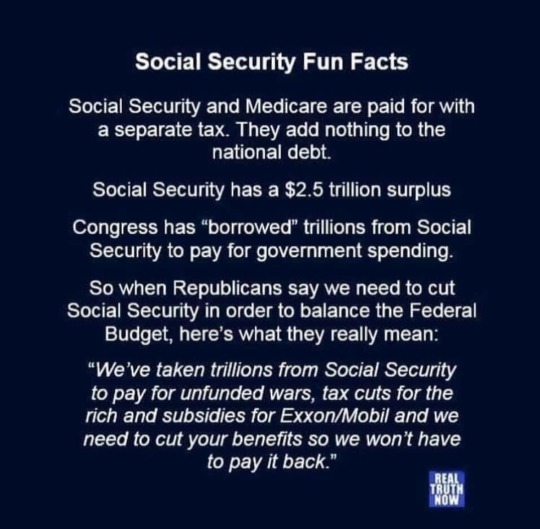
Social Security is a personal savings account you pay into every paycheck to ensure you are not destitute in your golden years.
Any political attack on social security is an attack on your well-being. The well-being of your family. The well-being of people who have one plan to live out their lives: social security.
You can't replace a plan for millions with cuts.
You must fund the plan as it was designed.
6K notes
·
View notes
Photo
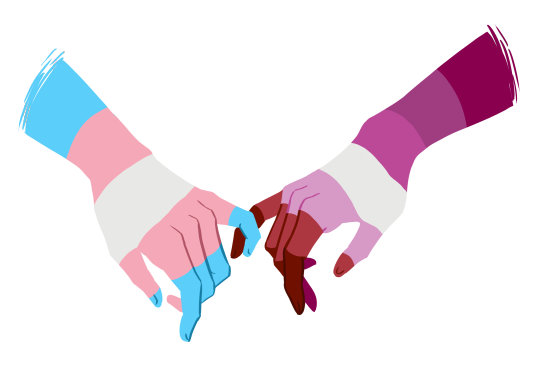
lesbians love and support our trans sisters 💖💖
268K notes
·
View notes
Text
Amazon is being sued by the FTC and 17 states for being an illegal monopoly
86K notes
·
View notes

